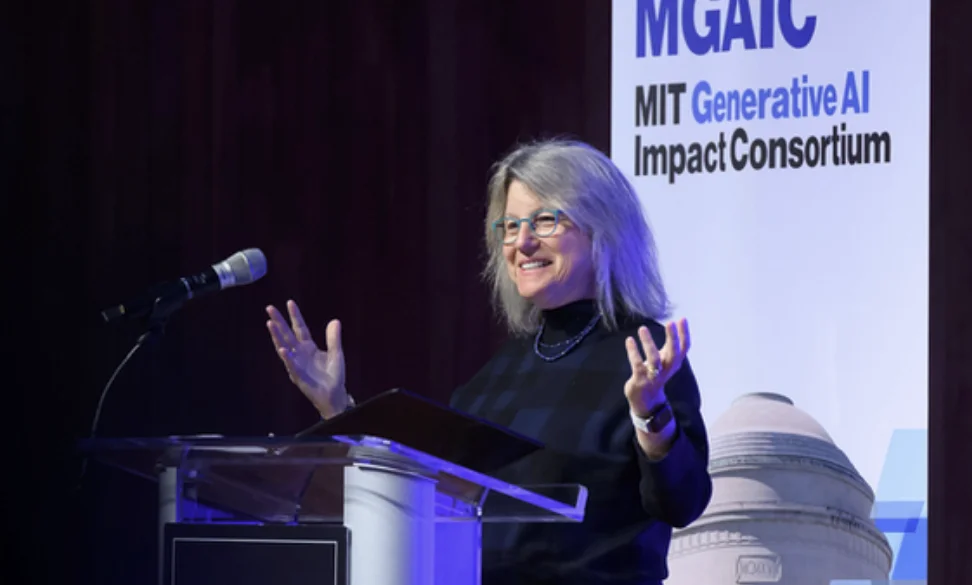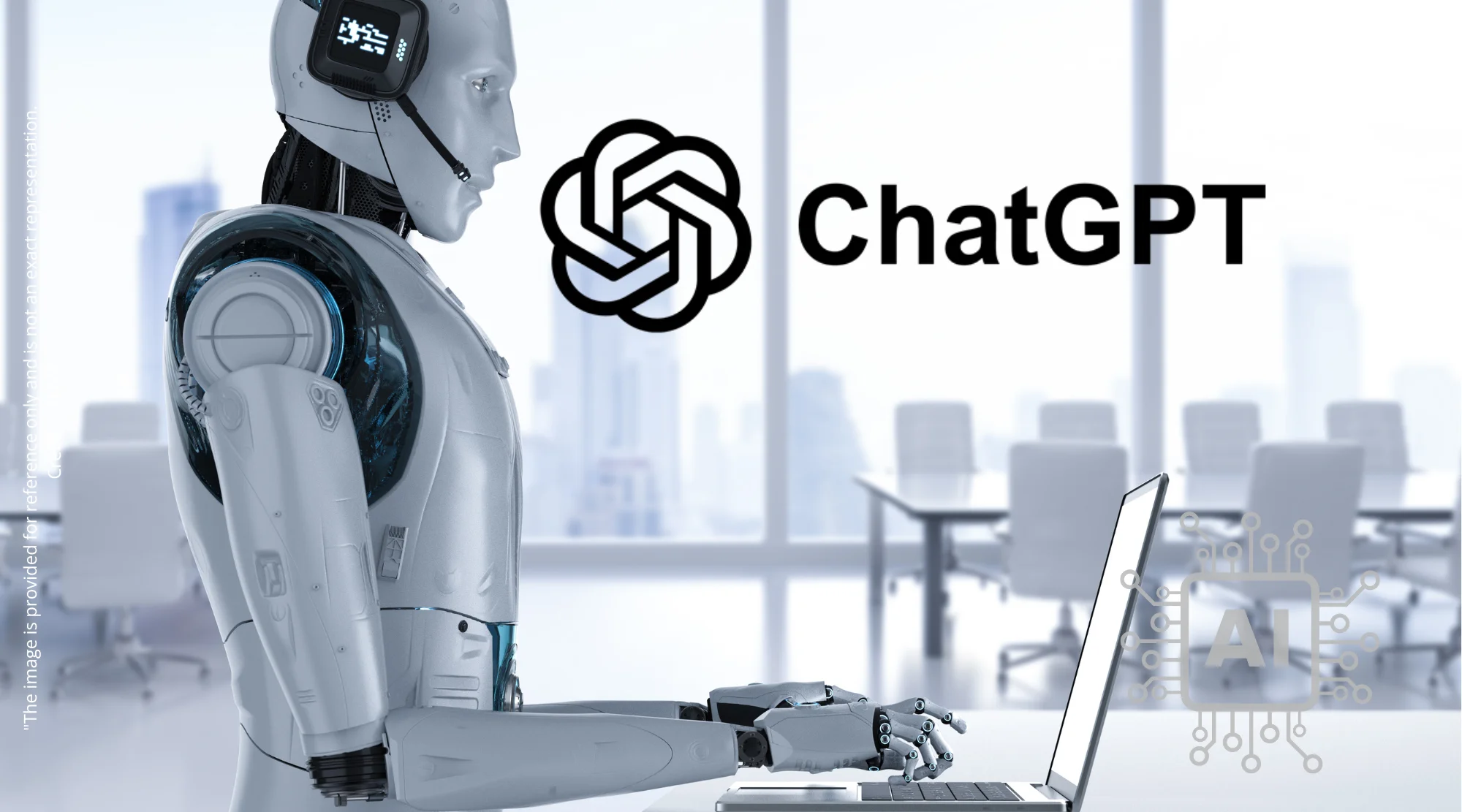Generative AI’s Next Frontier: Beyond Chatbots and Towards Deeper Understanding
The advent of generative AI, spearheaded by the public debut of ChatGPT in late 2022, has irrevocably altered the technological landscape. This seismic shift has propelled generative artificial intelligence from a niche concept to a pervasive force, rapidly embedding itself across industries, fueling scientific breakthroughs, transforming healthcare, and becoming an integral part of daily life for millions. As this powerful, albeit still imperfect, technology continues its relentless evolution, a crucial question looms: what lies ahead? To grapple with this very inquiry, hundreds of leading researchers, industry titans, educators, and students convened at MIT’s Kresge Auditorium for the inaugural MIT Generative AI Impact Consortium (MGAIC) Symposium. This pivotal gathering aimed to distill insights and chart a course for the future trajectory of generative AI.
“This is a pivotal moment — generative AI is moving fast. It is our job to make sure that, as the technology keeps advancing, our collective wisdom keeps pace,” declared MIT Provost Anantha Chandrakasan, setting a tone of urgent collaboration. The MGAIC itself, launched in February, represents a significant commitment from industry leaders and MIT researchers to harness generative AI’s capabilities for societal benefit. MIT President Sally Kornbluth emphasized this collaborative imperative, noting the global reliance on experts within the MGAIC and beyond to navigate the complex technological and ethical quandaries that accompany generative AI’s rapid development. “Part of MIT’s responsibility is to keep these advances coming for the world,” she stated. “How can we manage the magic [of generative AI] so that all of us can confidently rely on it for critical applications in the real world?”
Shifting Paradigms: From Pattern Recognition to World Models
While current generative AI models, such as large language models (LLMs) like Llama, GPT, and Claude, excel at identifying and replicating patterns within vast datasets to produce new content, a significant portion of the AI community is looking beyond incremental improvements. Yann LeCun, Chief AI Scientist at Meta and a keynote speaker at the symposium, posited that the most groundbreaking advancements in generative AI will likely stem from a fundamentally different approach: “world models.” These nascent models aim to emulate the learning process of human infants, acquiring knowledge through direct sensory input and interaction with their environment.
LeCun elaborated, “A 4-year-old has seen as much data through vision as the largest LLM. The world model is going to become the key component of future AI systems.” This paradigm shift envisions AI systems that can learn and adapt autonomously, much like humans do, by experiencing and understanding the physical world. For instance, a robot equipped with a sophisticated world model could potentially master new tasks without explicit pre-training, simply by observing and interacting. This capability is seen as crucial for developing robots that are truly useful and general-purpose in real-world scenarios.

Navigating the Future: Safety, Ethics, and Enhanced Capabilities
Despite the profound implications of developing more autonomous and human-like AI through world models, concerns about AI escaping human control appear to be tempered by a proactive approach to safety. LeCun expressed confidence that scientists and engineers will implement robust “guardrails” to ensure AI systems remain aligned with human intentions and societal well-being. He drew a parallel to millennia of human societal development, where rules and norms have been established to guide behavior for the common good. “We are going to have to design these guardrails, but by construction, the system will not be able to escape those guardrails,” he asserted, highlighting a belief in the feasibility of creating safe and controllable advanced AI.
The practical applications of generative AI were further underscored by Tye Brady, Chief Technologist at Amazon Robotics, another keynote speaker. Brady shared how Amazon is already leveraging generative AI to optimize robotic operations within its warehouses, enhancing the efficiency of material movement and streamlining order fulfillment. He anticipates a future rich with innovations in collaborative robotics, where AI empowers humans to achieve greater productivity and efficiency through seamless interaction with intelligent machines. Brady declared, “GenAI is probably the most impactful technology I have witnessed throughout my whole robotics career.”
Diverse Applications: From Enterprise to Healthcare and Research
The symposium also showcased the breadth of generative AI’s impact across various sectors. Presentations and panel discussions highlighted its integration into large enterprises like Coca-Cola and Analog Devices, as well as its transformative potential for startups in fields such as healthcare AI, exemplified by the company Abridge. These discussions underscored that generative AI is not merely a theoretical concept but a tangible force driving innovation and efficiency across the business spectrum. This aligns with trends seen in areas like Google Chrome AI: Gemini Unleashes a Productivity Revolution in Your Browser and AI Tools for Product Managers: Supercharge Your Product Strategy.
MIT faculty members also contributed by sharing their cutting-edge research. These included efforts to refine AI for reducing noise in ecological image data, developing novel AI systems designed to mitigate bias and prevent “hallucinations” (instances where AI generates factually incorrect or nonsensical information), and exploring avenues to enhance LLMs’ understanding of the visual world. These research initiatives demonstrate a deep commitment to addressing the current limitations of generative AI while pushing the boundaries of its capabilities. The ongoing work on AI hallucinations, for instance, is critical for building trust in these systems, as highlighted in articles such as AI Hallucinations: OpenAI Reveals Training Flaw & Potential Fix.
The Road Ahead: Responsibility and Opportunity
As the symposium drew to a close, Vivek Farias, MIT Faculty Co-Lead of MGAIC and the Patrick J. McGovern Professor at the MIT Sloan School of Management, expressed his hope that attendees would depart with a profound sense of both “possibility” and the “urgency to make that possibility real.” This sentiment encapsulates the dual nature of generative AI’s current stage: immense potential tempered by the critical need for responsible development and deployment.
The rapid evolution of generative AI necessitates continuous dialogue and collaboration between academia, industry, and policymakers. The development of more sophisticated AI, particularly with the advent of world models, requires a vigilant approach to ethical considerations, safety protocols, and the potential societal impacts. Ensuring these advanced systems are beneficial and align with human values will be paramount. As explored in AI Revolution: Decoding the Future of Intelligence and Innovation, understanding these complexities is key.
The discussions around future AI capabilities also touch upon novel hardware integrations, as seen with OpenAI’s Hardware Leap: Smart Speaker, Glasses, and a Pin on the Horizon and OpenAI’s New AI Device: A Pocket-Sized Revolution Against Smartphones?. These advancements suggest a future where AI is not confined to screens but is integrated more seamlessly into our physical environment, raising new questions about user experience and interaction. Similarly, the integration of AI into operating systems, like with Windows 11: Is the New Copilot Button Useful or Overkill?, points to a future of more pervasive AI assistance.
The ongoing democratization of AI tools, such as image generators like Seedream 4.0: The Leading AI Image Generator and advanced prompt engineering techniques exemplified by prompts for Google Gemini Nano Banana AI: 10 Viral Photo Prompts for Stunning Transformations, allows a broader audience to engage with and experiment with generative AI, fostering innovation and new use cases. The potential for AI in education, as seen with Smart ChatGPT Prompts: 15 Ways to Simplify Kids’ Homework, and in healthcare, such as AI Revolutionizes Fetal Imaging with Detailed 3D Health Models, further illustrates the multifaceted and overwhelmingly positive potential of this technology.
The path forward for generative AI is one of continuous learning, adaptation, and ethical stewardship. The insights shared at the MGAIC Symposium highlight a community deeply engaged in shaping this future, striving to ensure that as AI becomes more capable, it also becomes more beneficial and reliable for humanity. The journey from rudimentary pattern replication to sophisticated world modeling is an exciting one, promising advancements that could redefine our relationship with technology and the world around us. The question is no longer if generative AI will shape our future, but how we will collectively guide its development for the greatest good.


One thought on “Generative AI’s Future: World Models, Ethics, and Beyond”